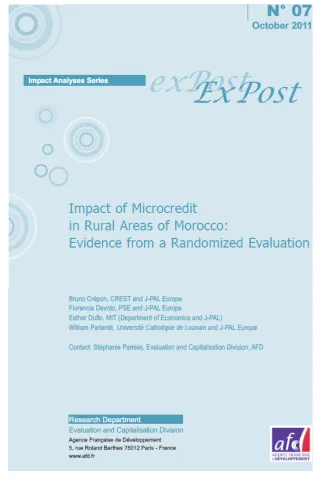Share the page
Impact of Microcredit in Rural Areas of Morocco: Evidence from a Randomized Evaluation
Published on

Microcredit has rapidly expanded in recent years, providing access to financial services to a large population previously excluded from the financial system. However, whether it helps the poor has been a subject of intense debate for which, until very recently, there was no rigorous evidence. This paper reports the results of a randomized experiment designed to measure the impact of microcredit in rural areas of Morocco. Within the catchment areas of new Microfinance Institution branches opened in areas that previously had no access to microcredit, 81 pairs of matched villages were selected. The treatment villages, randomly selected within each pair, were offered microcredit just after Al Amana opened the branch, while the control villages were offered access only two years later. The Al Amana program increased access to credit significantly. Its main effect was to expand the scale of existing self-employment activities of households, for both non-livestock agriculture and livestock activities. We find little or no effect on average consumption as well as on other outcomes such as health, education, etc. However, treatment effects are heterogeneous depending on whether the households had an existing self-employment activity at baseline. Households with a pre-existing activity decrease their non-durable consumption and consumption overall, as they save and borrow to expand their activities. Households without a pre-existing activity increase food and durable expenditure, and no effects on business outcomes are observed.
Useful Information
-
Authors
-
Bruno CREPON, Esther DUFLO, Florencia DEVOTO, William PARIENTE
-
Coordinators
-
Stéphanie Pamies
-
Edition
-
7
-
Number of pages
-
51
-
ISSN
-
2101-9657
-
Collection
-
ExPost Evaluation
-
Other languages
